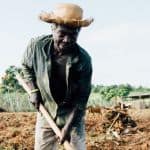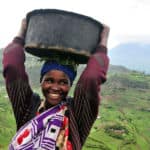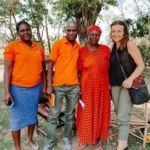The Danger of Subsidized Solar: How Government and Donors Unwittingly Hobbled Our Business
In 2015, Brighterlite entered Myanmar, becoming its first provider of pay-as-you-go solar electricity. Now, two years later, we have closed our Myanmar operations, shifting our focus to Pakistan. The nearly US $2 million invested in the Myanmar startup is lost.
There are several reasons why we closed Brighterlite Myanmar, including many mistakes we made ourselves. But here I would like to focus on an external factor that triggered our decision to close: the impact of subsidies. I hope this discussion can help other companies avoid the same difficulties that Brighterlite faced, by 1) encouraging donor financing agreements to adhere to basic principles for commercial activity, and 2) discouraging others from subsidising the price end users pay for solar.
Brighterlite leases solar home systems (SHS) and key household appliances (such as mobile phones, lights and TVs) to households on a commercial basis. Customers pay a small upfront payment followed by regular “top-ups,” paid via their mobile phone. Brighterlite received very valuable startup grants from GSMA and two other grantors, and brought significant private capital into Myanmar to help increase electricity access.
When Brighterlite entered Myanmar, we knew the Myanmar government – through the Department for Rural Development (DRD) – subsidised large numbers of SHS in border areas. We also knew that the World Bank, through Myanmar’s National Electrification Plan (NEP), would provide US $80 million for off-grid electrification there. Under this scheme, households would initially pay only 10 percent of the cost for the SHS they would receive, later increasing to 20 percent. We didn’t support such heavy subsidies; they leave consumers waiting for additional freebies, and hence undermine the growth of a commercial market. However, the NEP said these subsidies would only target border regions (Chin, Kachin, Kayin, Shan, Rakhine, Tanintharyi and Sagaing), which struggle economically, are exposed to armed conflict, have limited distribution networks and have transport and logistics challenges.
Since the NEP said World Bank funding for subsidized SHS would be “limited to the geographically remote sections of the country where the IFC proposed Lighting Myanmar program would not be able to reach users” (NEP, page 13), Brighterlite targeted the large off-grid population in the non-border areas of Myanmar (the “central corridor” of Yangon, Mandalay, Naypyidaw, Mon, Bago and Magway), in cooperation with IFC Lighting Myanmar. We did this because the NEP said it was “designed to complement and coordinate with” IFC Lighting Myanmar, “to help develop commercial market solutions for solar photovoltaic devices and kits in central Myanmar” (page 7). Furthermore, the NEP (page 43) describes a “phased approach … [in which] IFC takes the lead in fostering a commercial market in Central Myanmar in Phase 1, and eventually create[s] a nationwide commercial-oriented model … in Phase 2.” The NEP project appraisal document also contained the following warning: “IFC’s proposed Lighting Myanmar program faces considerable risk should the Government decide to move beyond the more remote areas with its off-grid solar subsidy program, and crowd out private companies in areas where private companies have sought to invest” (page14).
In early 2015, long before Brighterlite established a company in Myanmar, we started negotiating a memorandum of understanding (MoU) with the DRD. One reason was that if the government started providing heavy subsidies for SHS in the central corridor, our business would be threatened. It would wipe away demand by serving hundreds of thousands of households, but even more importantly, word of mouth would work against us: If you live in an off-grid village and you hear from your neighbor that the government provides solar home systems nearly for free in a nearby village, you will not buy a similar system at full cost.
We had a long and good dialogue with the DRD and signed the MoU in early 2016. A major point in the MoU was to establish a channel of communication with the DRD: We would tell them where we were actively selling, and they would provide information about the village electrification status and their plans. We started supplying frequent information to the DRD about our rollout, down to single townships and villages. A large public tender for subsidized solar from the DRD followed soon after, using World Bank funding. It was in practice not for pay-as-you-go providers but targeted only border regions.
However, in January 2017, Brighterlite’s staff encountered DRD staff surveying the villages where we were actively selling. The DRD staff informed the population that solar systems would be given out nearly for free. We requested a meeting with the DRD, which now told us that villages in all of Myanmar, including the central corridor previously reserved for commercial operations, would receive these heavily discounted solar home systems. This happened even though hundreds of thousands of households in these areas had already bought solar on a commercial basis – from entities such as Brighterlite, but also from, for example, Chinese providers. A few weeks later, the DRD announced a second tender for heavily subsidized SHS, funded by the World Bank[1]. Not only did this tender cover the provinces we were actively selling in, but the specific townships and villages where we had informed the DRD that we were selling in were actually among those receiving the largest number of heavily subsidized systems.
It is currently impossible for Brighterlite to implement a commercial business operation in Myanmar. The government’s actual policy implementation within off-grid electrification contradicts agreed-upon plans, and is hence unpredictable. We would have no way of knowing which villages would receive heavily subsidized SHS in the next government tender or the one after that. We hope the DRD, the World Bank and other donors draw the following lessons from Brighterlite Myanmar’s exit:
- Donor financing agreements should explicitly ban diversions from agreed-upon basic principles forming the basis for commercial activity (such as, in the NEP case, geographical coverage of subsidies), and there needs to be a process in place to ensure that no such diversions take place.
- Donors and governments should stop subsidizing the price end users pay for solar, especially in areas where commercial operations are feasible. Instead, they should continue to work to provide results-based financing for commercial operators, regardless of which business model they use, as long as they can document that they have installed high-quality solar in off-grid households. This levels the commercial playing field and avoids distorting the market. It also establishes a favorable business climate, in which companies will need to fund their own operations through debt or equity until and unless they generate results, which reduces the risk for donors and leverages private capital.
It’s understandable and laudable that governments and donors are actively promoting access to off-grid solar in challenging markets. But at the end of the day, these consumers need quality services provided by healthy and competitive businesses – not handouts dependent on the shifting priorities of the public and development sectors.
[1] The tender documents reference the World Bank, and they have a World Bank contact person. The World Bank’s recent status report for the NEP says, under “Key Decisions” that “[t]he second SHS tender (…) is under bid evaluation.” The geographical change in subsidy coverage is not mentioned.
Jørund Buen is co-founder and partner at Differ, providing early-stage capital and advisory services within renewable energy and energy efficiency in developing countries. He is currently CEO of Prime, which sells fuel-efficient, ultra-clean biomass stoves for households in developing countries.
Photo of the author in Myanmar, courtesy of Brighterlite.com.
- Categories
- Energy, Social Enterprise



